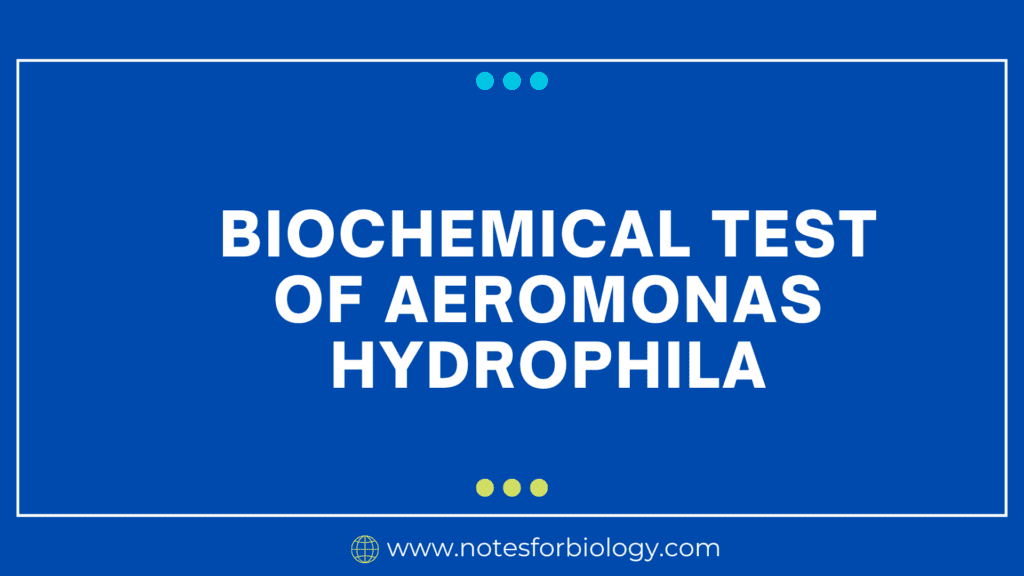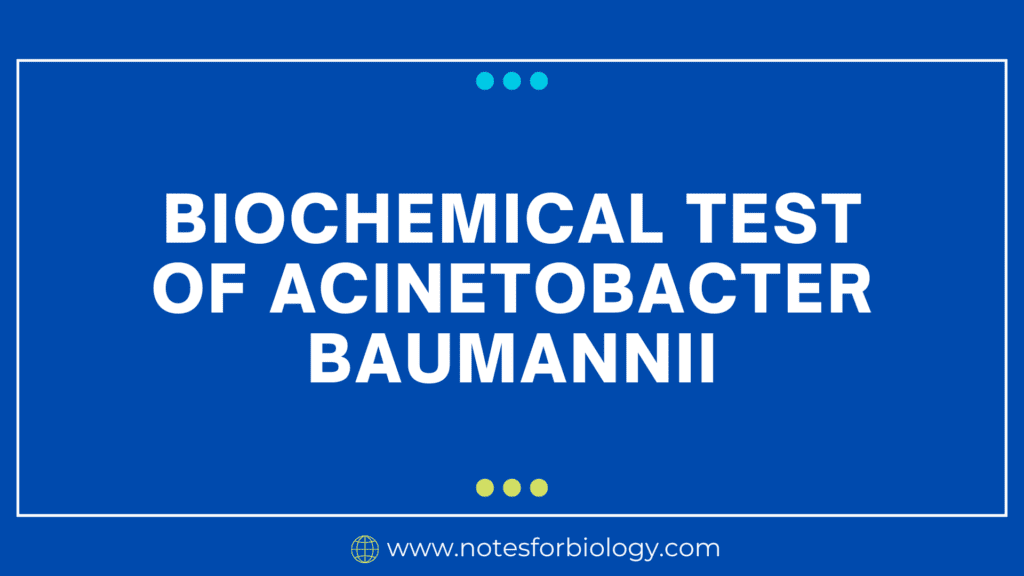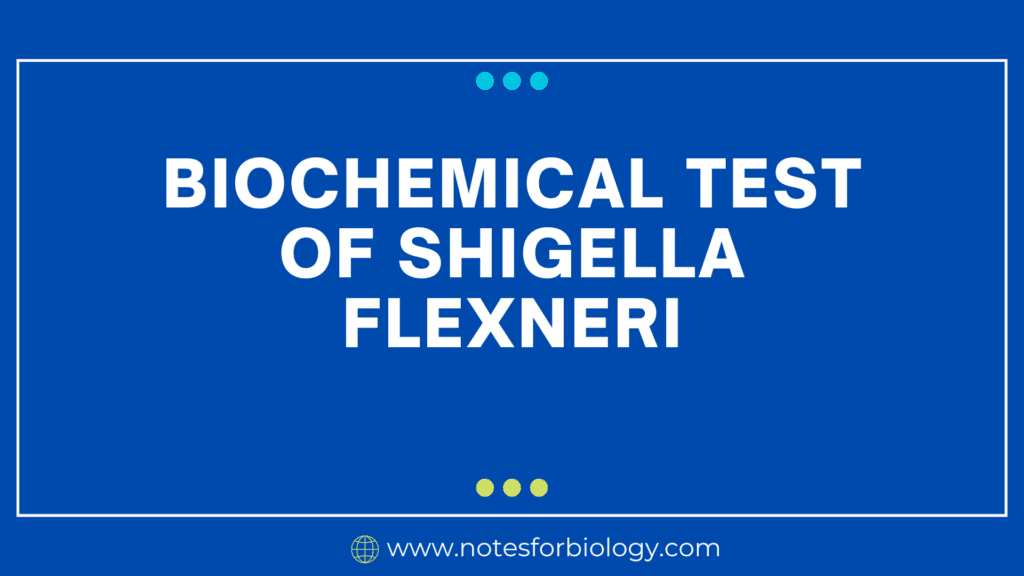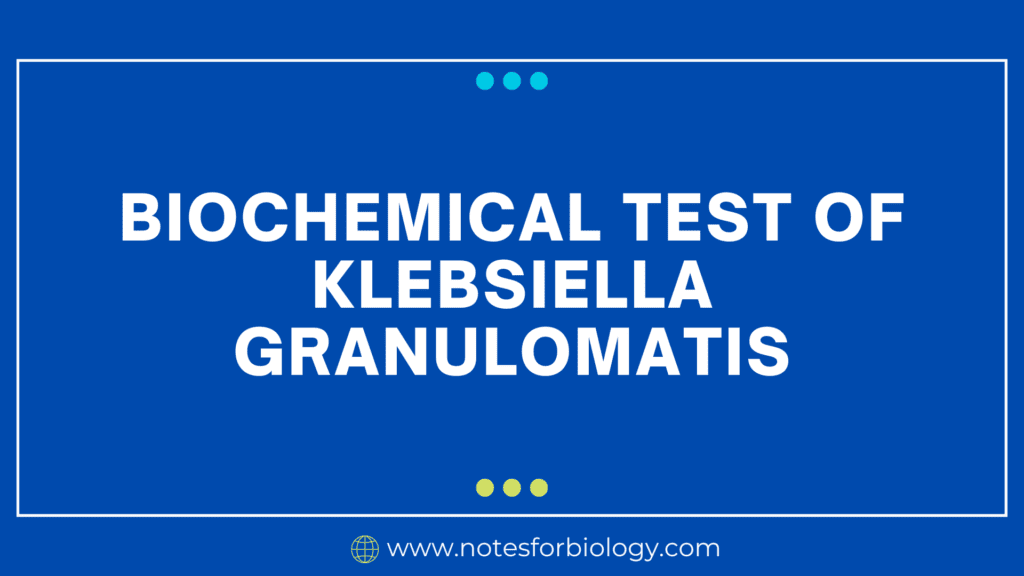Aeromonas hydrophila is the rod-shaped, facultatively anaerobic, gram-negative bacterium frequently found in aquatic settings. It is well recognized to infect both people and animals with a wide range of illnesses. The identification and characterization of this bacteria depend on biochemical assays. The main biochemical assays that are used to identify Aeromonas hydrophila are summarized below.
Table of Contents
Aeromonas hydrophila

Biochemical Testing

Characteristics
- Gram Stain: Negative Gram
- Shape: Like a rod
- Mobility: Frequently possessing a solitary polar flagellum
- Air Facultative anaerobic growth (able to occur with or without oxygen) is required.
Below is a summary of key biochemical tests used to identify Aeromonas hydrophila
Gram Stain
- Gram-negative rods as a result
Oxidase Test
- Concept: Identifies cytochrome c oxidase presence.
- Method: On filter paper that has been treated with oxidase reagent (tetramethyl-p-phenylenediamine), a colony is spread out.
- Positive outcome (purple/blue color in 10–30 seconds).
Catalase Test
- Concept: Identifies the existence of the catalase enzyme, which converts hydrogen peroxide into oxygen and water.
- Method: Combine a colony with a droplet of hydrogen peroxide.
- Positive outcome (bubbling).
Indole Test
- Principle: Indicates if tryptophan can be converted into indole.
- Method: Incubate tryptone broth after inoculation. After incubation, add Kovac’s reagent.
- Positive outcome indicated by the red ring at the tube’s top.
Motility Test
- The ability to move through a semi-solid medium is determined by the principle.
- Steps to follow: inoculate and incubate a semi-solid medium.
- Diffuse development away from the stab line indicates a positive outcome.
Sugar Fermentation Tests
- Principle: Ascertains the capacity to produce acid and/or gas during the fermentation of different sugars (such as glucose, lactose, sucrose, etc.).
- Method: Inoculate a Durham tube (for gas detection) and sugar broth medium with a pH indicator.
- Findings:
- Positive glucose: (production of gas and acid)
- Lactose: erratic (usually in the negative)
- Sucrose: Positive (produces gas and acid).
Citrate Utilization Test
- The ability to employ citrate as the only carbon source is determined by this principle.
- Method: Inoculate Simmons Citrate Agar and allow it to grow.
- Positive outcome (green to blue hue change).
Hydrogen Sulfide Production (TSI Test)
- The goal is to find evidence of hydrogen sulfide generation.
- Findings: Negative (Triple Sugar Iron agar shows no black precipitate).
Urease Test
- Checking for urease enzyme production is the goal.
- Results: Negative (urea broth does not alter color).
Gelatin Hydrolysis Test
- The goal is to evaluate the gelatin’s hydrolyzability.
- Positive outcome (gelatin liquefaction)
Lysine Decarboxylase Test
- Goal: To ascertain lysine’s capacity for decarboxylation.
- LYSINE IRON AGAR’s purple tint indicates a positive result.
Ornithine Decarboxylase Test
- The goal is to ascertain whether ornithine can be decarboxylate.
- Finding: (purple color in the broth of ornithine decarboxylase)
Arginine Dihydrolase Test
- Goal: To evaluate arginine hydrolysis capacity.
- Alkaline pH change in arginine dihydrolase broth is a positive result.
ONPG Test (Ortho-Nitrophenyl-β-galactoside)
- The aim is to identify β-galactosidase’s existence.
- Result: Positive (formation of ONP is shown by a yellow hue).
Summary
In tests for oxidase, catalase, glucose fermentation, indole synthesis, methyl red, citrate utilization, gelatin hydrolysis, lysine decarboxylase, ornithine decarboxylase, arginine dihydrolase, and ONPG, Aeromonas hydrophila usually yields favorable results. For the Voges-Proskauer, hydrogen sulfide generation, and urease tests, the results are typically negative. Aeromonas hydrophila can be identified and confirmed in clinical and environmental samples thanks to their biochemical traits.
Frequently Asked Questions(FAQ)
Define Aeromonas hydrophila ?
Aeromonas hydrophila is the rod-shaped, facultatively anaerobic, gram-negative bacterium frequently found in aquatic settings. It is well recognized to infect both people and animals with a wide range of illnesses
What are the biochemical reactions of Aeromonas?
The fermentation of d-glucose and trehalose, the absence of mucate, the presence of cytochrome oxidase and nitrate reductase, and the incapacity to generate acid from d-arabitol, dulcitol, erythritol, and xylose were the reasons for these reactions.
How to test for Aeromonas?
The triple sugar iron agar (glucose fermenting) test, the oxidase test (positive), or Biolog detection techniques can all be used for laboratory confirmation.
What is the appearance of Aeromonas hydrophila?
Aeromonas hydrophila bacteria are bacilli to coccibacilli shaped, straight rods with rounded ends that are Gram-negative and typically measure between 0.3 and 1.0 μm in width and 1.0 and 3.0 μm in length.
Related Article




